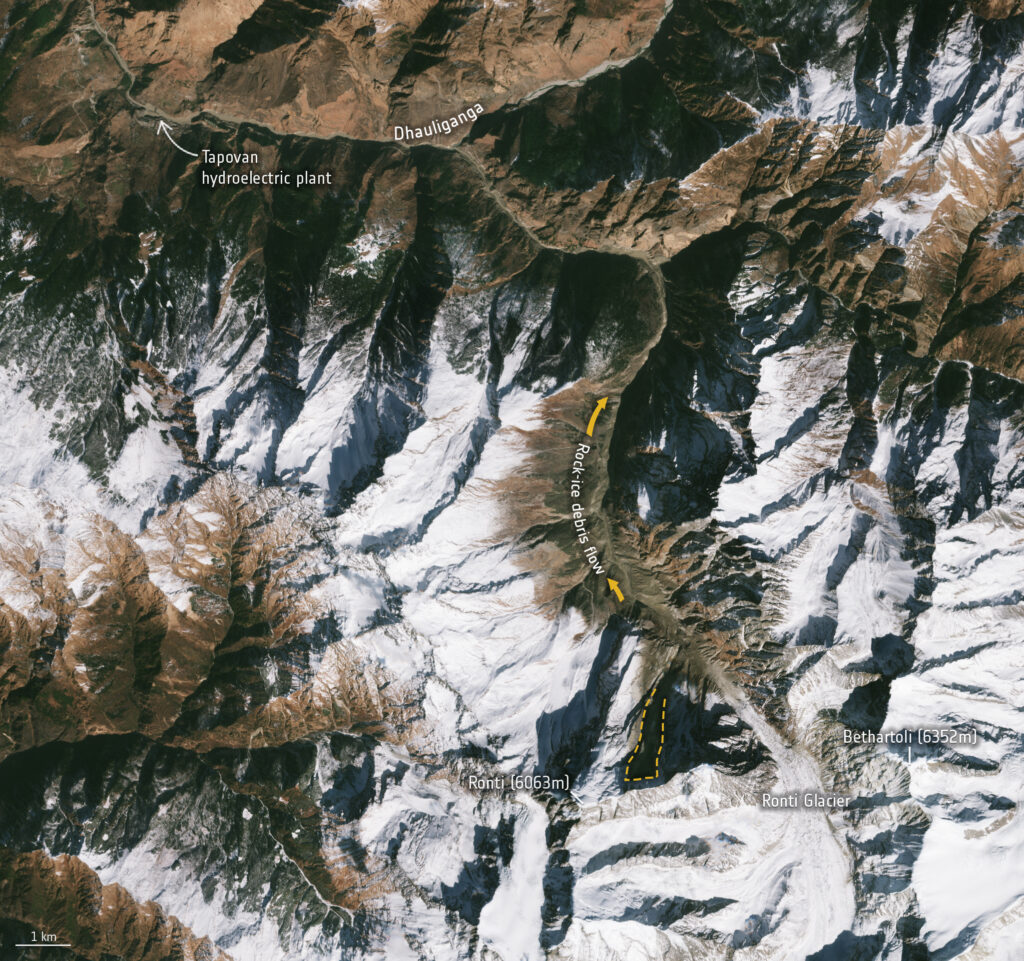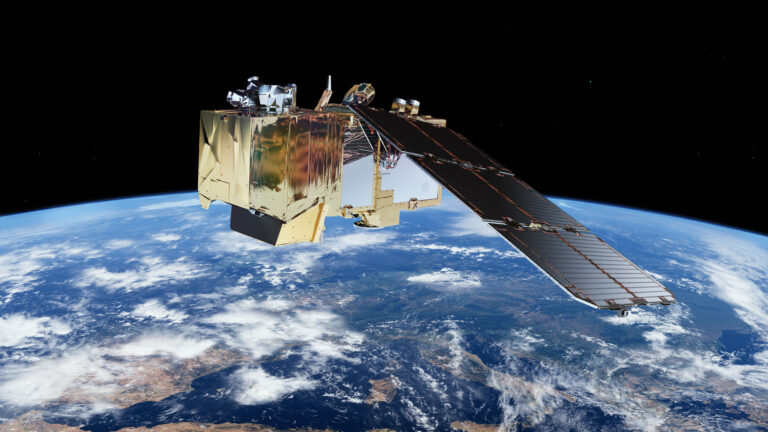A new study using satellite evidence has confirmed that a rock and ice avalanche caused the Chamoli disaster in India in February 2021. The avalanche killed more than 200 people and destroyed two major hydropower facilities that were under construction.
The humanitarian tragedy was the result of around 27 million cubic meters of rock and ice hitting the Chamoli district in the Uttarakhand region of India after it had been released from the steep mountain flank of Ronti Peak.
In response to the disaster, the International Charter: Space and Major Disasters – a venture between 17 space agencies to provide free satellite data to those affected by natural and human-made emergencies – was activated.
The service provides free access to very high-resolution satellite data such as from Worldview 1/2, Cartosat-1 and Pleiades. Combined with freely available images from Landsat and the Copernicus Sentinel-2 mission, scientists analyzed numerous images acquired before and after the event to quantify key measures of the event, such as its total volume, elevation differences and travel distances.
A team of 53 scientists and experts came together to reconstruct the event and investigate the scope and impact of the flood caused by the landslide. Their study, published on June 10 in the journal Science, analyzed satellite imagery, seismic records and eye-witness videos to determine the timing of the event and produce computer models of the flow.
This analysis allowed scientists to discover that the disaster was caused by a large mass of ice and rock dislodged from the slopes of Ronti Peak, starting as a giant landslide that transformed into a mud and debris flow, causing destruction along its path.
The results of the analysis were also sent to the governmental agencies of India to help them plan and support emergency assistance to the local teams.

Two participants from the European Space Agency‘s (ESA) Climate Change Initiative – the Glaciers_cci and Permafrost_cci projects – helped with the retrieval and analysis of satellite images, which included those from Copernicus Sentinel-2, PlanetLab and Corona.
Professor Andreas Kääb from the University of Oslo was able to determine the volume and ice/rock mixing ratios based on his experience with such events from earlier studies. He explained, “The calculated 80% rock in the avalanche completely converted the 20% glacier ice into water over the 3,200m elevation difference from Ronti Peak to the Tapovan hydropower plant. This conversion is largely responsible for the devastating impact of the resulting mud and debris flood wave.”



